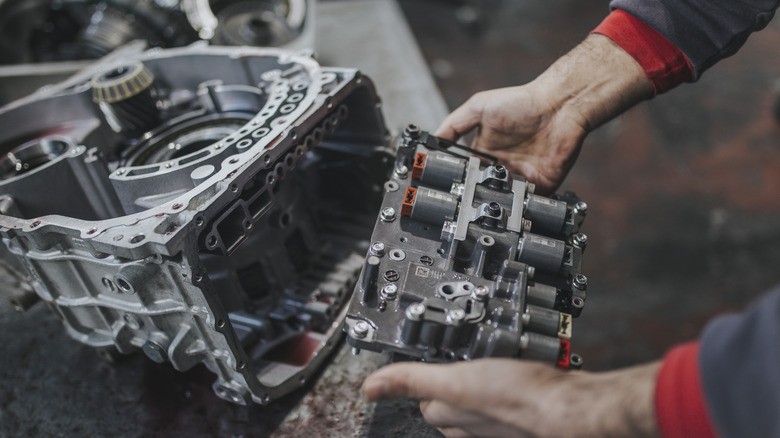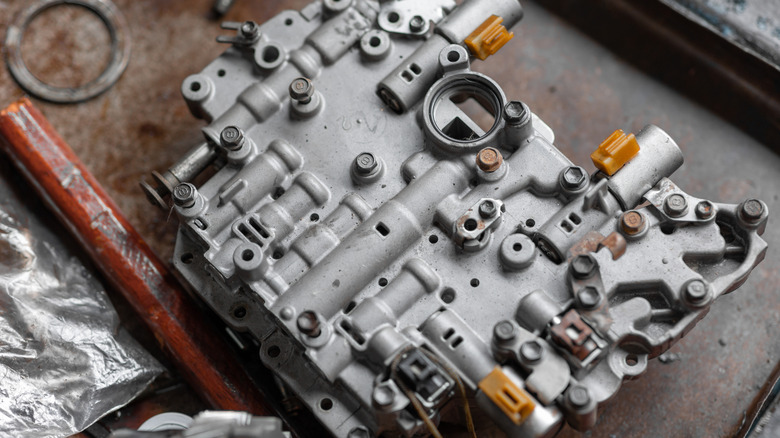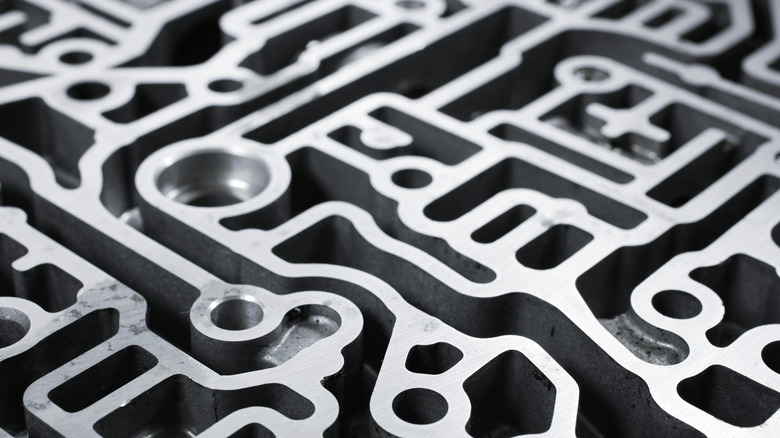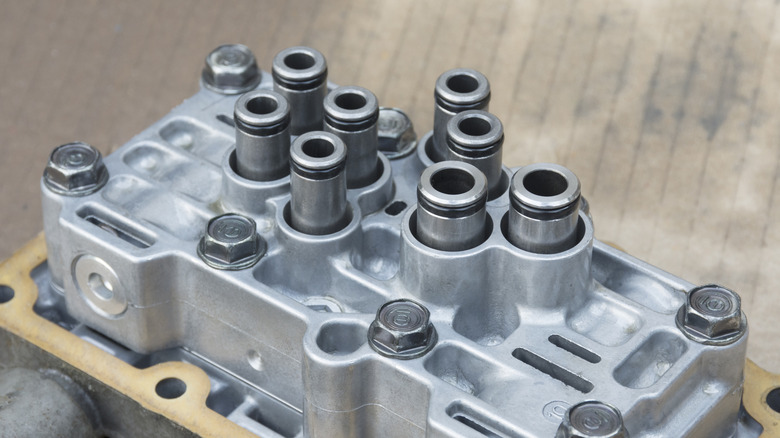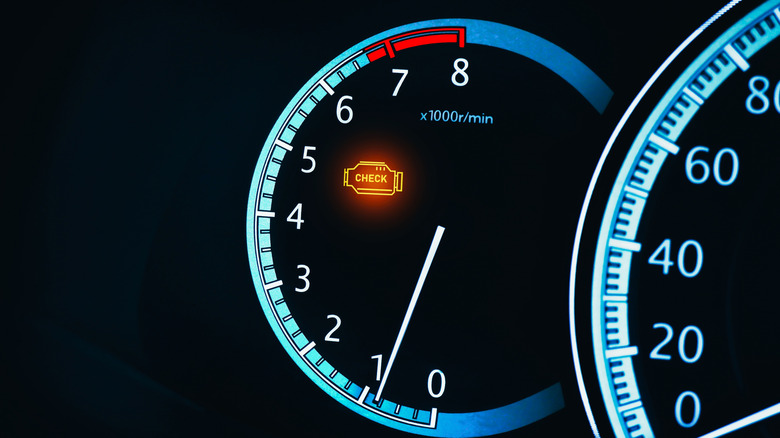What Is A Transmission Valve Body And What Happens When It Has Gone Bad?
The transmission valve body is among the most important components of your vehicle's transmission system, yet it often goes unnoticed until something goes wrong. As a key player in the functionality of automatic transmission systems—alongside the planetary gears, clutches, and torque converter— the valve body functions as the control center of the gearbox. It comprises a network of valves, passages, and solenoids that drive hydraulic fluid to give you a smooth gear-shifting experience. Without the valve body, automatic transmissions wouldn't function as we know them today.
However, when the valve body malfunctions, your car's performance is affected and can lead to costly repairs. Recognizing the warning signs that your transmission is going bad can save you from these expensive fixes and dangerous situations on the road. And yes, there are some bad habits that might be harming your transmission too— which often leads to wear and tear — but the symptoms of valve body issues are specific and worth noticing.
What Is a transmission valve body?
A transmission valve body is a complex maze of channels and valves in an automatic transmission system. It is commonly referred to as the transmission's brain since it plays a huge role in directing hydraulic fluid to the appropriate clutches and bands to facilitate gear shifts. In manual transmissions, the equivalent of this valve body is the shift linkage and gear selectors, which perform the same functions alongside the driver-operated clutch mechanism and gear lever. The transmission valve body operates on signals and instructions provided by the vehicle's electronic control unit (ECU), which considers real-time inputs like vehicle speed, engine RPM, load, and throttle position.
There are several valves within the body, and each serves a specific purpose. For instance, the 1-2 shift valve manages the transition from first to second gear while providing you with smooth acceleration. Modern valve bodies come with solenoids – electronically controlled actuators that determine how fluid is routed. Managed by the transmission control module (TCM), these solenoids open and close when they receive signals to reroute transmission fluid.
How the transmission valve body works
The valve body receives the transmission fluid under pressure from the pump. When the vehicle accelerates or decelerates, the valve routes this fluid through precisely machined passages to engage or disengage certain gears. Each valve, such as the reverse valve or the 1-2 valve mentioned earlier, opens and closes to control this flow.
Solenoids are located in the mechatronics unit of the transmission and controlled by the transmission control module (TCM). Acting as gates for this transmission fluid, their function is to open and close based on engine RPM, throttle position, and vehicle speed. For instance, when the TCM detects the need for a downshift — based on human inputs — it signals the solenoids to reroute fluid to the appropriate channels.
The valve body keeps the gear shifts smooth and efficient by precisely timing the transmission fluid delivery. Different gears work for different scenarios, and knowing how and when to use the low gear in an automatic car can help you traverse terrains better. While high gears work for flat roads and highways, lower gears are more suitable for steep roads. And if the vehicle requires more torque — either to climb or to tow something — the valve body adjusts the hydraulic pressure to engage a lower gear.
What are some causes of transmission valve body failure?
Transmission valve body failure is often the result of interconnected issues, with the first culprit being wear and tear. Over time, the movement of valve bodies under high pressure leads to mechanical fatigue. Older vehicles are particularly prone to this degradation since they have purely mechanical valve bodies, whose components lack the durability offered in modern designs.
Contaminated or degraded transmission fluid is another cause of valve body failure. Dirt, debris, or metal particles within the fluid — from everyday use or damage to the transmission — can obstruct passages. Transmission fluid also becomes contaminated if it isn't changed regularly, which is why changing it is considered one of the ways to extend the life of a vehicle's transmission. Also, when the fluid degrades, it loses its lubricating and cooling properties, which can lead to issues like overheating. This excessive heat can cause the solenoids to malfunction and initiate valve body failure, with symptoms like erratic gear shifts, incorrect shifting, or gear slippage eventually causing damage to the whole transmission unit.
What happens when a transmission valve body goes bad?
While you can technically still drive your car with a bad transmission valve body, it is not recommended as it can lead to transmission failure. It should only be done for short distances to get to your local repair shop. Continued operation of your vehicle in this state can cause wear on clutches, bands, and other internal components, which can lead to a total transmission failure. Ignoring the warning signs escalates repair costs, as replacing the transmission system is far costlier than fixing a valve body earlier on. Also, a transmission valve body failure affects your vehicle's performance and safety.
At its core, a malfunctioning valve body disrupts the flow of hydraulic fluid needed for gear shifts. This can lead to a cascade of transmission issues often accompanied by a check engine light. You may also hear knocking sounds coming from the transmission when you accelerate or decelerate.
One of the first notable effects is the poor shifting performance. You will experience delayed shifts, unexpected gear changes, or even a complete inability to shift into certain gears. This can make driving unpredictable and unsafe, particularly in scenarios that require you to accelerate or decelerate quickly. For instance, an improper shift or deceleration when going uphill could lead to disaster — so don't wait if you see signs of a valve body gone bad.
